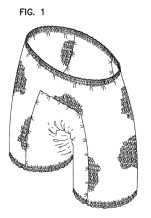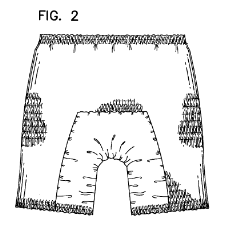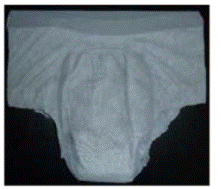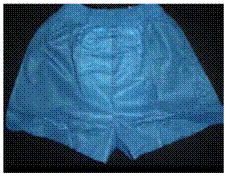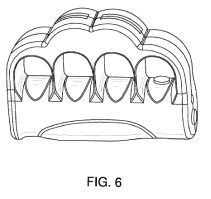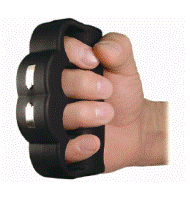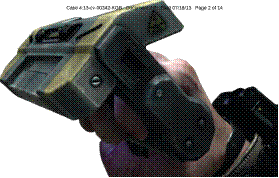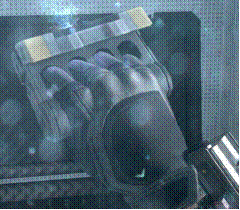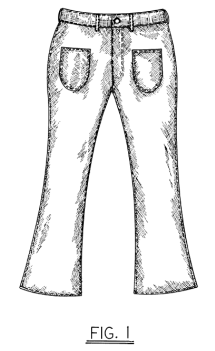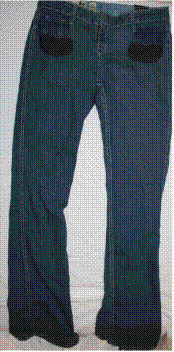
Design Patents
Who Dunnit?: Design Patents Cover “Designs,” Not “Design Concepts”
When someone has a new idea, they often turn to intellectual property attorneys to help them protect their idea. It is important to remember that each form of intellectual property has a role to play in serving this overall goal. For design patents, it is protecting the appearance of an article of manufacture.
Design patents have many roles, depending on the circumstances. But at their heart, they cover the design displayed within their figures, not a more general design concept. Keep in mind that the scope of a design patent is determined by the solid lines of the patent figures. And infringement of a design patent is assessed from the point of view of an ordinary observer familiar with the prior art. The basic inquiry is whether the claimed design is substantially similar to the article accused of infringement.
These are some golden tenets of design patent practice that are sometimes overlooked by design patent owners, perhaps in their efforts to earnestly protect an idea they think is theirs. Consider three recent cases.
Number 1: The Case of the Roomie Bloomers
In Anderson v. Kimberly-Clark Corp., No. 2014-1117 (Fed. Cir. July 10, 2014), the design patent was directed to an “absorbent disposable undergarment”:
|
|
U.S. Design Patent No. D401,328 (“the D328 patent”) |
|
Ms. Anderson filed suit in Washington state against Kimberly-Clark, maker of Depend® and GoodNites® brand absorbent undergarments for adults and children, respectively.
|
|
Depend® Real Fit for Men Briefs |
GoodNite® Brand “Boxer” Style Brief |
The district court dismissed the complaint for failure to state a claim of infringement, and the Federal Circuit affirmed. The district court found that Ms. Anderson’s complaint had “fallen well short of a viable infringement claim.” Id., slip op. at 6 (citation omitted). The Federal Circuit affirmed the district court’s application of the “ordinary observer” test and the at least three “most striking” differences between the patented design and the Depend® products, including the “bloomers-style” of the claimed design and the “briefs-style” of the accused product. The Federal Circuit also agreed that there were at least four major differences between the GoodNite® product and the claimed design.
Number 2: The Case of the Shocking Brass Knuckles
In P.S. Products, Inc. v. Activision Blizzard, Inc., No. 4:13-cv-00342 (W.D. Ark. Feb. 21, 2014) (granting motion to dismiss), one plaintiff is the inventor of two design patents directed to designs for “stun guns,” which appear to resemble brass knuckles. The other plaintiff is the manufacturer of a product embodying that design:
|
|
U.S. Design Patent No. D561,294 (“the D294 patent”) and P.S. Product’s “Zap Blast Knuckle” |
|
The plaintiffs accused the defendants’ depiction of the following handheld stun gun of design patent infringement:
|
|
Activision’s Combat Suppression Knuckles1 |
|
Activision moved to dismiss the complaint, arguing that no ordinary observer would mistake the Combat Suppression Knuckles for the design claimed in the D294 patent. In response, P.S. Products argued that there was “no prior art” to its design because “this patented product did not exist anywhere in the world until it was designed, patented and placed in the stream of commerce” by P.S. Products. P.S. Products also stated that its “patent is unique and [plaintiffs are] the sole inventor of the concept and design.” The court agreed with Activision, finding that no reasonable person would purchase Activision’s video game believing that they were purchasing plaintiffs’ stun gun, and dismissed the case.
Number 3: The Case of Inside-Out Denim
In Chuck Roaste, LLC v. Reverse Gear, LLC and Call Me Bleu, LLC, No. 1:14-cv-01109 (N. Ohio May 22, 2014), the patent-in-suit was filed in 1999 and is titled “Reversible Denim Pants”:
|
|
The “reversed condition” figures of the D055 patent appear to include front and rear pockets, and a waistband directed to a “spotted” material. Chuck Roaste filed suit against the defendants, accusing their “Reversible Collection” of infringement:
|
|
“First” Condition of Accused Product |
“Reversed” Conditionof Accused Product |
Reverse Gear and Call Me Bleu both deny infringement. This case is still in its infancy and it remains to be seen how the court will rule. But it is interesting to note that the accused product does not appear to have a patterned waistband or pockets with the “spotted” material like the patent-in-suit.
Conclusion: The Reveal
What do all three of these cases have in common? First, none of the design-patent figures appeared to be substantially similar to the accused products, aside from being the same type of article. Indeed, the claim designs have elements (such as the groin element of D328 or the patterned waistband of D055) that are completely missing from the accused products.
Nonetheless, it appears that the patent owners in each case believed their design-patent rights included the right to exclude others from using a “design concept” (e.g., absorbent undergarments, brass-knuckle stun gun, or reversible jeans) in addition to the figures shown in the patent. P.S. Products admitted that it called itself the “sole inventor of the concept” of a stun gun held like a pair of brass knuckles.
But this is not true. As the Federal Circuit has repeatedly held, the scope of the patent is limited to the “overall ornamental visual impression, rather than to the broader general design concept.” OddzOn Prods., Inc. v. Just Toys, Inc., 122 F.3d 1396, 1405 (Fed. Cir. 1997). And for the plaintiffs in Anderson and P.S. Products, the court dismissed the case because the overall ornamental impression of the claimed design was much different than the accused product, such that the ordinary observer would not find the two to be substantially similar. Chucke Roaste may suffer the same fate.
This can be a hard pill to swallow for an upstart designer who has a new idea.
1 The astute reader will see that these pictures are not of a real product, but are rather screenshots from a videogame—specifically, Activision’s Call of Duty: Black Ops® II. The question of whether a design patent can be infringed by a depiction in a video game is an interesting question, but one that this column will leave for another day.
